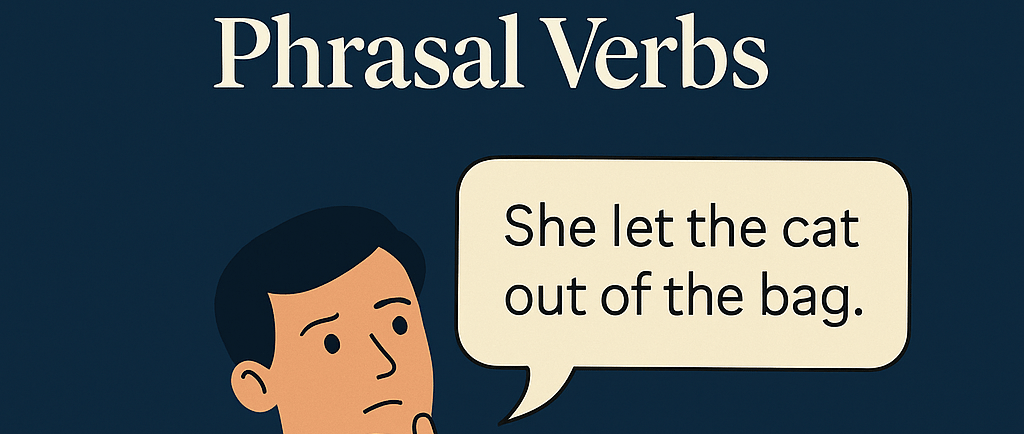Unlocking Natural English
Mastering Idioms and Phrasal Verbs
GIST English Masterclass
7/26/20253 min temps de lecture


Introduction
Idioms and phrasal verbs are the soul of spoken and written English. They go beyond dictionary meanings to capture culture, creativity, and the rhythm of everyday life. For advanced learners, mastering idiomatic language is the difference between sounding “correct” and sounding truly natural. Yet idioms and phrasal verbs remain one of the most frustrating areas for learners.
Idioms such as spill the beans or bite the bullet often cannot be translated word-for-word into another language. Similarly, phrasal verbs like get on with or put up with seem illogical at first sight because the meaning is not simply the sum of the verb and the particle. Still, these expressions are essential for understanding native speakers and for achieving fluency at an advanced level.
Why Idioms and Phrasal Verbs Are Difficult
Non-literal meaning
Idioms rarely mean what the words literally suggest. Kick the bucket does not involve kicking or a bucket.
Cultural embeddedness
Many idioms arise from history, literature, or shared cultural knowledge. Without cultural context, the meaning is opaque.
Variability
Some idioms allow slight variations (to let the cat out of the bag vs. the cat was let out of the bag), while others break if altered.
Phrasal verb polysemy
One phrasal verb may have multiple meanings. Take off means remove clothing, become successful, or when a plane leaves the ground.
Lack of equivalents
Learners often try to translate directly from their native language, but idiomatic expressions rarely map neatly.
A Master Approach to Learning Idioms and Phrasal Verbs
To move from confusion to mastery, learners should adopt a systematic and reflective strategy.
Learn in Context, Not in Lists
Instead of memorizing idioms or phrasal verbs in isolation, learn them through real contexts: films, interviews, podcasts, or books. Example: Hear get on with your work in a workplace drama, and you understand it as “continue doing.”
Group by Meaning and Function
Organize them by theme (e.g., emotions: cheer up, break down, bottle up) or by verb (get over, get along with, get away with). Patterns make recall easier.
Connect with Culture
Research the story or metaphor behind an idiom. Knowing that spill the beans originally referred to secret voting in ancient Greece makes it easier to remember.
Practice Through Paraphrasing
Try explaining the idiom or phrasal verb in plain English. Example: He finally kicked the bucket = He died.
Use Active Recall
Write short stories or dialogues where you deliberately insert idioms and phrasal verbs. Active usage cements memory far more than passive reading.
Notice Register and Tone
Idioms and phrasal verbs vary in formality. Children passed away is more formal than the kids kicked the bucket. Learning appropriateness is key.
10 Advanced Idioms and Phrasal Verbs in Action
Below are common yet advanced examples. Copy this test, complete it, then paste it back into ChatGPT with the prompt:
“Show the correct answers.”
Test: Complete the sentences with the correct idiom or phrasal verb.
After years of rivalry, the two companies finally decided to ___ and work together on a new project. (idiom: bury the hatchet)
She kept her cool during the meeting, but later she completely ___ when she got home. (phrasal verb: break down)
I know the schedule is tight, but we will just have to ___ and finish the task. (idiom: bite the bullet)
The project did not succeed at first, but it really ___ after they found a new investor. (phrasal verb: take off)
He was so nervous before the interview that he tried to ___ his feelings with a smile. (phrasal verb: bottle up)
The news of their engagement was supposed to be secret, but John accidentally ___ at the party. (idiom: let the cat out of the bag)
We had a small disagreement, but we quickly managed to ___ it and move on. (phrasal verb: get over)
Despite his poor performance, he somehow managed to ___ with only a warning. (phrasal verb: get away with)
When she heard the shocking story, she just could not ___ her laughter. (phrasal verb: hold back)
The company decided to ___ the new product launch until the economic situation improved. (phrasal verb: put off)
Conclusion
Idioms and phrasal verbs are not just decorative. They are the DNA of authentic English communication. They allow you to sound natural, interpret nuance, and connect with the cultural heart of the language. By learning them in context, grouping them by meaning, and practicing them actively, you can move beyond textbook English to mastery.
Idiomatic mastery does not come overnight. It grows out of curiosity, cultural awareness, and constant practice. With every idiom you learn and every phrasal verb you use correctly, you step closer to sounding like a native speaker—not only grammatically accurate but naturally expressive.
